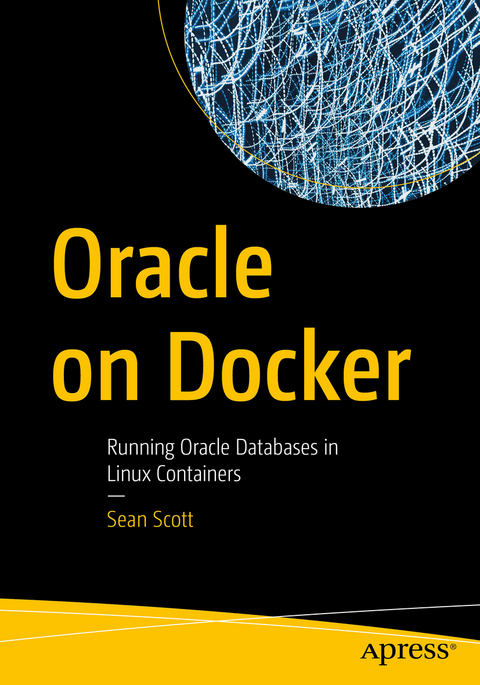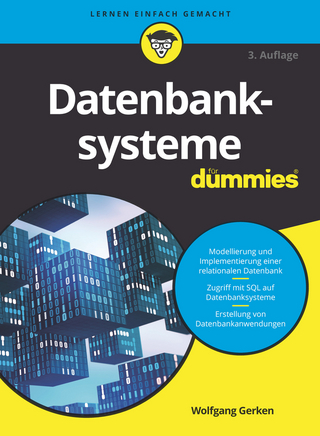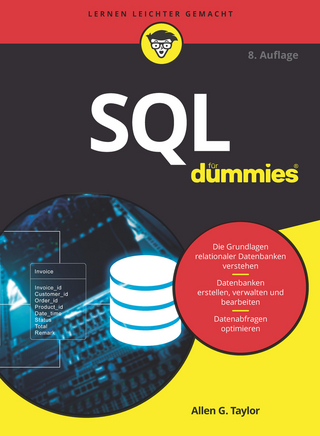
Oracle on Docker
Apress (Verlag)
978-1-4842-9032-3 (ISBN)
This book teaches you how to begin working with Oracle databases in Docker, covering the steps for preparing and installing software on Windows, Mac, and Linux systems. It describes the steps for deploying Oracle databases, separating data and configurations from database software, and networking and communicating with your containers. It introduces the Docker commands you’ll use for managingcontainers, including tips and shortcuts to make everyday tasks easier. Databases have unique demands for performance and reliability, and this book addresses those qualities with discussions on protecting, persisting, and distributing data. Other books may overlook these topics and approach containers as disposable commodities in serverless environments or convenient coding platforms. You’ll gain battle-tested insights for customizing and extending your containers to meet different needs.
The opening chapters concentrate on the practical steps of running Oracle databases in Docker. Once you’re comfortable with container terminology and methods, you’ll look deeper at the real power behind containers—preparing and building images, and the templates that form the foundation beneath every container. You’ll begin by modifying publicly available image manifests, or Dockerfiles, following multiple examples that add functionality and capabilities to your databases. You’lldiscover methods for using run-time options to create flexible and extensible images that adapt to real-world requirements.
Within the pages, you’ll see how Oracle and Docker empower you to confidently build and deploy systems. It’s written with databases and database users in mind and delivers practical advice based on the author’s real-world, battle-tested experiences deploying and running Oracle databases in containers since 2014. With Oracle databases in containers, database administrators have the ideal platform for evaluating performance, practicing database upgrades and migrations, validating backup and recovery processes, and hardening environments. Developers will find that the marriage of Oracle and Docker simplifies code and application tests. Docker’s unique ability to isolate data artifacts improves reliability and confidence in test and QA processes. If you’re a database administrator, this book will help you join the container revolution sweeping the industry and making IT professionals more productive than ever!
What You Will Learn
Recognize when and why to use containers for an Oracle database
Understand container terminology and architecture
Create and customize Oracle databases in containers
Build and extend images and containers for multiple uses
Store and persist data beyond the container ecosystem
Use popular database tools with databases in containers
Explore container networking and connect multiple container databases
Manage, monitor, and secure containers
Write Dockerfiles to support custom requirements
Package and deploy data artifacts that accelerate development, test, and QA activities
Who This Book Is For
Database administrators, developers, and systems administrators who want to be more productive by running Oracle databases in Linux containers
Sean Scott is an Oracle ACE Pro and Oracle Certified Professional. His Oracle career spans over 25 years as an application developer, database administrator, systems and database architect, and database reliability engineer. He specializes in Oracle's Engineered Systems; migrations, upgrades, and database consolidations; cloud implementations; database reliability and resilience; automation; virtualization; and containers. Sean is active in the user community as a volunteer and has presented at Oracle OpenWorld, Collaborate, IOUG, and as a featured speaker at regional user groups worldwide.
Introduction.-.-Part I. Introduction to Containers.-1. Introducing Docker and Oracle.-2. Understanding the Container Landscape.-3. Container Foundations.-4. Oracle Database Quick Start Guide.-5. Differences in Database Containers.-6. Customize Container Environments.-7. Persistence.-8. Basic Networking.-9. Container Networks.-10. Container Creation Quick Reference.-.-Part II. Building and Customizing Images.-11. Customizing Images.-12. Dockerfile Syntax.-13. Dockerfiles for Orcale Databases.-14. Building Images.-15. Debugging and Troubleshooting.-16. Docker Hub and Image Repositories.-17. Conclusion.-.-Part III. Appendixes.- Chapter 18. Appendix A. Installing Docker Desktop.- Chapter 19. Appendix B. Aliases and Functions.
| Erscheinungsdatum | 01.10.2022 |
|---|---|
| Zusatzinfo | 78 Illustrations, black and white; XXI, 423 p. 78 illus. |
| Verlagsort | Berkley |
| Sprache | englisch |
| Maße | 178 x 254 mm |
| Themenwelt | Mathematik / Informatik ► Informatik ► Datenbanken |
| Schlagworte | Container Databases • Database Container • Database Image • DevOps • Docker Build Database • Docker Compose • Docker Containers • Dockerfile • Docker Hub • Docker Run Database • Infrastructure as code • Oracle Database • Pluggable Databases • Podman • Virtual machines |
| ISBN-10 | 1-4842-9032-1 / 1484290321 |
| ISBN-13 | 978-1-4842-9032-3 / 9781484290323 |
| Zustand | Neuware |
| Haben Sie eine Frage zum Produkt? |
aus dem Bereich


